Hepburn and Sons Joins Forces with MELD Manufacturing
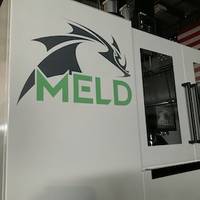
Hepburn and Sons LLC announced it has officially joined forces with MELD Manufacturing Corporation, developer of the patented, solid-state metal additive manufacturing process and provider of MELD 3D printing machines. The companies have been working together since 2021 to introduce the Navy and other military services and DoD agencies to MELD, also known as additive friction stir deposition.Hepburn and Sons LLC is a small business founded in 2010 whose initial focus was to provide expert consulting…
Armach Robotics Launches Its First Hull Service Robot
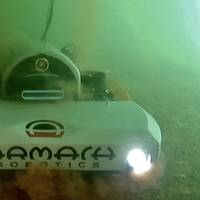
Armach Robotics, the robotic hull-cleaning subscription service company launched last year as a Greensea spin-off, has launched its first post-prototype Hull Service Robot.Armach said that the robot is a disruptive technology in hull cleaning, being man-portable at under 66lbs (30kgs) and around 34 inches (86cm) long, greatly reducing deployment costs and increasing convenience. The robot was recently launched for its first in-water trials at Plymouth, Massachusetts.James Truman, Armach’s VP of Engineering says: “My favorite job in this industry is working on next-generation systems.
Proserv, Intelligent Plant Ink Deal Aiming to Drive Digital Evolution
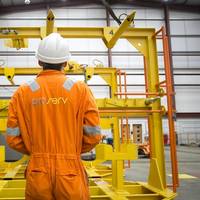
Proserv Controls signed a strategic alliance with software engineering firm Intelligent Plant, a deal aimed to deliver advanced control systems and data analysis to provide operators with digital solutions tailored to their needs and feedback. The announcement follows a broader industry trend toward leveraging true digitalization to help rationalize efficiencies in the offshore industry. Ultimately the tie-up with Proserv and Intelligent plan will integrate improved visibility of system information…
The ABC’s of DP 101
Dynamic Positioning has been around for a while, it is evolving and it is here to stay. Here to sort it all out are two of industry’s more familiar stakeholders who also explain what might come next.When it comes to critical offshore operations and vessel handling, this is not your grandfather’s marine industry, and it hasn’t been for some time. That’s because the bridge layout and equipment commonly found on any recently delivered offshore service vessel would be unfamiliar to the typical deck officer of just 20 years ago. Much of that can be attributed to the advent of dynamic positioning equipment systems.DP – perhaps like no other skill at sea – has changed the role of the deck officer. The technical requirements to qualify and operate this equipment are vast.
Auckland Signs for Damen Electric Tug
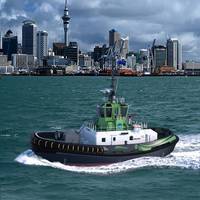
On July 29th, New Zealand’s Ports of Auckland signed a contract with the Damen Shipyards Group for the delivery of an innovative new vessel. The RSD-E Tug 2513 will be the first fully-electric ship-handling tug in the world with 70 tonnes bollard pull. The vessel completes the green cycle of energy in the port with its unrivaled performance in sustainability.Building on green foundationsDamen’s RSD Tug 2513, unveiled in 2018, already boasts extreme green credentials, being fuel-efficient and IMO Tier III ready.
The Drones are Coming

Nimble and quick, unmanned aerial vehicles have evolved into a valuable tool for marine and offshore applications.When a U.S. oil tanker conducts a Critical Area Inspection Plan (CAIP) as required by ABS, it is an onerous process. For example, each tank requires seven days of set up with scaffolding and staging. An ABS inspector and UDT technicians must access, and be carefully lowered into the tank with instrumentation and tools. Inspection points in far reaching places are surveyed.
DNV GL Raises the Standard for Thermoplastic Composite Pipes

DNV GL has launched a new standard that allows operators to choose thermoplastic composite pipes (TCP) instead of steel or traditional flexibles, enabling substantial cost reductions throughout the project lifecycle.After the successful and wide adaptation of the recommended practice (RP) DNVGL-RP-F119 by the industry for qualification of TCP for various applications from dynamic to static applications since its publication in 2015, the RP has now been converted to an official DNV GL standard DNVGL-ST-F119.
Huntington Ingalls Enters Partnership for 3D Printing
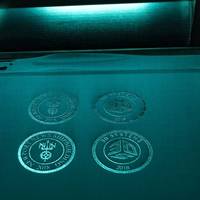
Huntington Ingalls Industries announced it has partnered with a company specializing in 3D printing technologies in a move that aims to transform naval shipbuilding in the U.S.Huntington Ingalls’ Newport News Shipbuilding division will work with 3D Systems to develop additive manufacturing technologies expected to accelerate the adoption of metal 3D printing for building components of U.S. warships.The joint effort, which comes amid a significant technological transformation underway at Newport News…
Consortium: Blockchain Solution to Improve Ocean Shipping
A consortium comprising AB InBev, Accenture, APL, Kuehne + Nagel and a European customs organization has successfully tested a blockchain solution that can eliminate the need for printed shipping documents and save the freight and logistics industry hundreds of millions of dollars annually. The consortium tested a solution where documents are no longer exchanged physically or digitally but instead, the relevant data is shared and distributed using blockchain technology under single ownership principles determined by the type of information. Through a detailed review of the current documentation processes, the group examined a re-allocation of information ownership, accountability and risk enabled by the trust and security blockchain technology offers.
Disruption 'Powered by Transas'

Maritime Reporter & Engineering News caught up with Frank Coles, the ubiquitous leader of Transas, fresh from his company’s user’s conference in Malta. In typical candor, Coles paints his picture of maritime and shipping’s future. With a captive audience of more than 400 clients in scenic Malta for several days earlier this year, one might be surprised when Frank Coles admits that the meeting was not all about Transas. “I wanted something completely different. I didn’t want to talk about Transas, I wanted to talk about the industry and what we can learn from aviation.
Rolls-Royce Blue Ocean Team Looks to the Future

Esa Jokioinen leads Rolls-Royce Marine’s Blue Ocean Team, a team that looks five to 10 years into the future to evaluate evolving technology trends, helping to determine where the company will invest. Jokioinen sat in Maritime Reporter & Engineering News’ New York City headquarters to discuss the look of maritime’s future: All arrows point toward digitalization. When Esa Jokioinen and his Rolls-Royce Blue Ocean Team look at future technology trajectory, he admits that there are some things related to energy storage (batteries), new fuel and exhaust cleaning that hold promise.
ABS Drives Game-changing Tech through Research
University Partnership Symposium spotlights research that aims to contribute to sustainable solutions for industry. Classification society ABS has revealed technological advances at its recent University Partnership Symposium in Houston. ABS said the research it is funding through some of the top universities around the world will lead to disruptive technology that will impact the role of classification. Academic leaders from the Massachusetts Institute of Technology, the University of California at Berkeley, the University of Michigan, George Washington University and the State University of New York Maritime College presented at the ABS-hosted event, which engaged participants from academia and industry.
NRL Researchers Demo Ship-to-Shore Data Link

Scientists at the U.S. Naval Research Laboratory (NRL) along with Mercury Continuity (MC) have demonstrated the Tactical Reachback Extended Communications (TREC) system in the port of Miami. The NRL-developed communications technology, which provides a very high data rate transmission over long ranges, was tested as part of a Cooperative Research and Development Agreement (CRADA) with MC and Intelligent Designs, LLC. The full-duplex connection was set up between a node on top of a 760-foot-tall building near the harbor and another on board the vessel Norwegian Sky…
US Navy Seeks to Transform Gas Turbine Technology
Naval Research Laboritory (NRL) scientists study the complex physics of Rotating Detonation Engines (RDE's). With its strong dependence on gas-turbine engines for propulsion, the U.S. Navy is always looking for ways to improve the fuel consumption of these engines. At the Naval Research Laboratory (NRL), scientists are studying the complex physics of Rotating Detonation Engines (RDEs) which offer the potential for high dollar savings by way of reduced fuel consumption in gas-turbine engines, explains Dr. Kazhikathra Kailasanath, who heads NRL's Laboratories for Computational Physics and Fluid Dynamics. Many Navy aircraft use gas-turbine engines for propulsion, with the Navy's gas-turbine engines being fundamentally similar to engines used in commercial airplanes.
Technip and CIMV Sign Green Chemistry Cooperation Pact
Technip, a specialist in engineering and construction for the energy industry, signed a cooperation agreement in the green chemistry business with the Compagnie Industrielle de la Matière Végétale (CIMV) to industrialize CIMV’s process. The two companies have been working together for the past five years (Technip has provided CIMV with its technological expertise in the fields of engineering and construction, enabling CIMV to pass from the pilot unit stage to the industrial unit stage). During this period, CIMV’s process has been identified as a disruptive technology in the field of green chemistry. Today, this technology is capable of converting solid biomass into hydrocarbons which can be used as a feedstock by the petrochemical industry.









